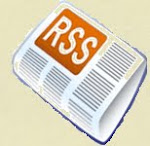The need for training is often identified when something goes wrong.
- Bad parts are getting to the customer
- A customer is angry, or too many customers are angry
- It takes too long for the team to solve problems
- Validation testing yields 40% first time failures
- Program targets aren’t being met in a timely manner
These are just a few examples of common business problems. These issues have root causes that are not always correctable through Training. Let’s take the first example of “Bad parts are getting to the customer”. A few of the root causes could be:
- Lack of manufacturing poke-yokes

- Lack of design poke-yokes
- Bad parts feeding manu- facturing from a supplier
- Operator instructions not correct or difficult
- Machine not operating as designed
Each of these root causes identify a different person as responsible for the failure, which in turn identifies specific training – or does it?
In addition to understanding what, where, and when, it is important to identify who is responsible and who will impact future outcomes. ‘Who’ is commonly defined in a process explaining the performance required. It should be noted that job performance is simply tied to job expectations, work experience, job knowledge, and workload. Everyone goes to work wanting to do a good job.
Any employee should be able to say: 
- I know what’s expected of me
- I have experience that helps me do my job better
- I know how to do my job, and
- I have enough time to accomplish all that is assigned to me.
Training is needed when an employee can’t do #3 well. Setting employees up for success can only make the company more successful.


No comments:
Post a Comment
I'm very interested in what you have to say. Thanks for joining the conversation! To contact me directly, please write to: jennifer AT werthexpertise DOT com